Military Knowledge: Zhubin Suicide Drone
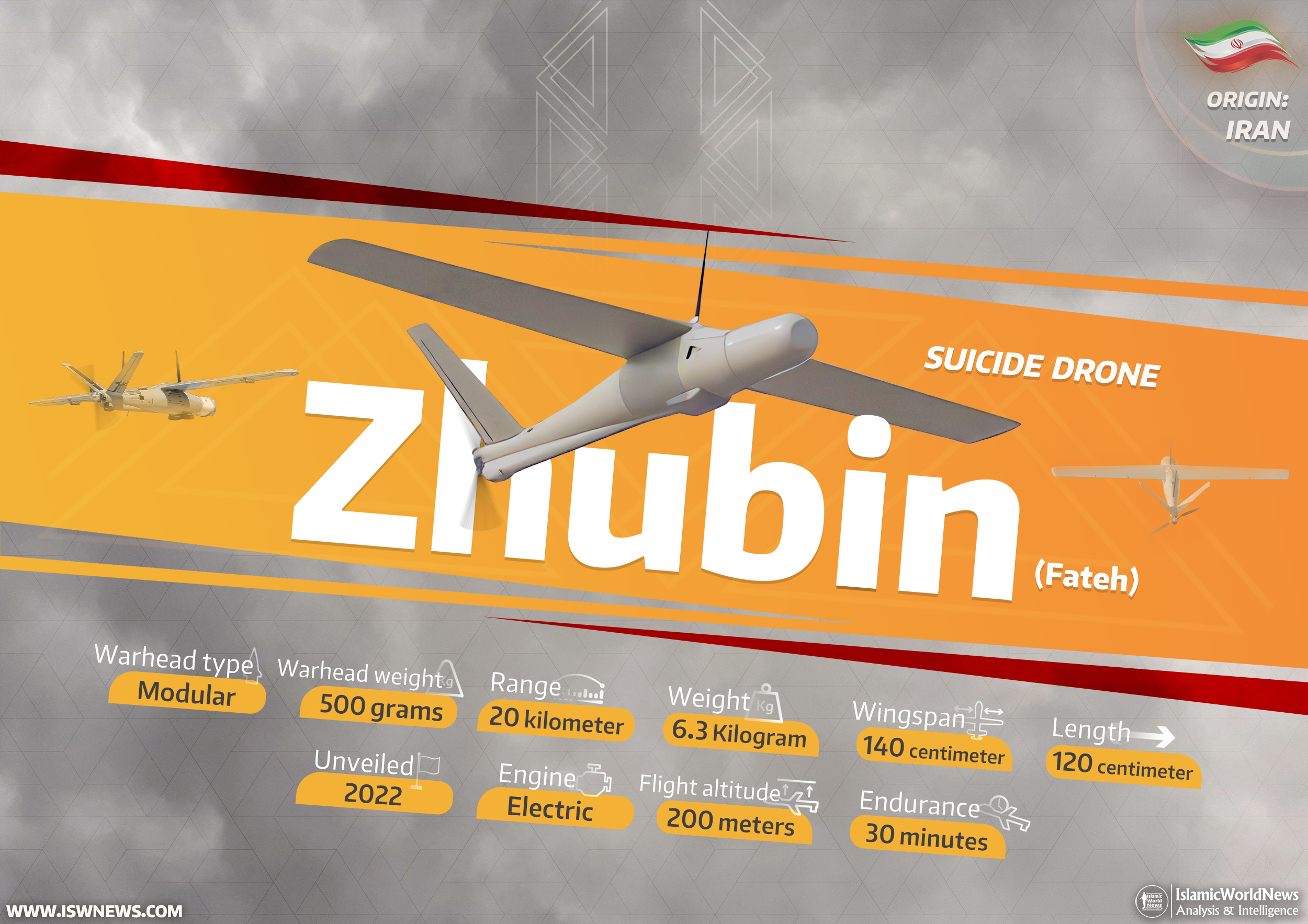
The Zhobin (Fateh) is a small suicide drone designed for infantry use, utilized by the Iranian Army Ground Forces. It features a pneumatic launcher, an electric motor, a modular warhead, and high accuracy, making it highly suitable for battlefield operations.
The Zhubin, also known as the Fateh, can be described as a mature and efficient product. It was first publicly showcased during a training exercise in 2022 and entered mass production for the Army Ground Forces in 2024.
This drone features a standard aerodynamic design characterized by an elongated dolphin-shaped body, flat trapezoidal wings, and a V-shaped tail. The body length is 120 cm, and each wing measures 70 cm, resulting in a total wingspan of 140 cm.
The wings have a trapezoidal shape, which means their width tapers from the root to the tip. This design is commonly employed to evenly distribute air pressure across the wings and optimize lift. However, the reduction in width on the Zhubin drone is minimal and not immediately noticeable. Additionally, the wings are designed to integrate smoothly with the fuselage at a gentle angle, emphasizing stability at medium speeds. The seamless connection of the wings to the fuselage, likely utilizing “Blended Wing Body” techniques, reduces aerodynamic drag and enhances lift.
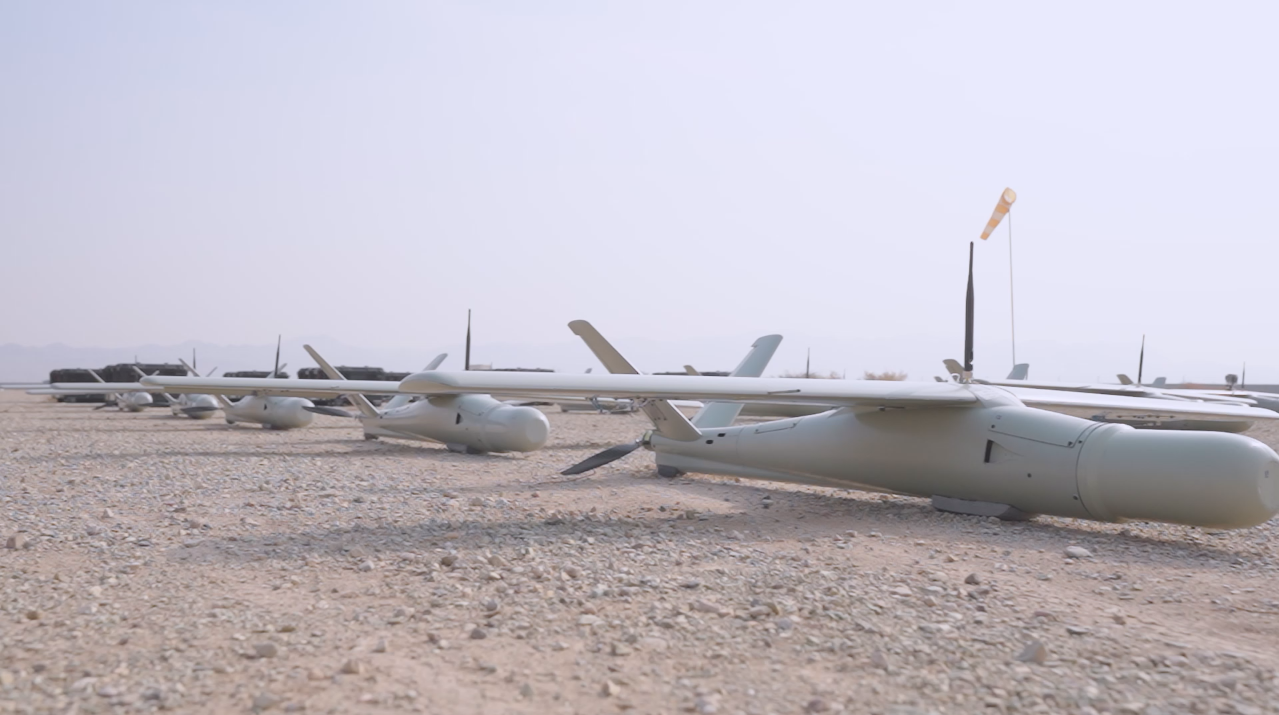
The dolphin-shaped design of this drone is based on streamlined principles to minimize both shape resistance and surface friction. The body tapers in diameter toward the rear, contributing to its aerodynamic efficiency. Its soft curves and absence of sharp corners along the body, wings, and tail reflect a commitment to biomimicry.
While we cannot definitively identify the material used for the body, indications such as the type of molding and the smooth surface suggest that it is likely made from carbon fiber or fiberglass composites.
Overall, the Zhubin drone has a relatively low mass of 6.3 kg. This lightweight design enables it to be powered by a low-power electric motor, allowing for flight durations of up to 30 minutes and altitudes of up to 200 meters.
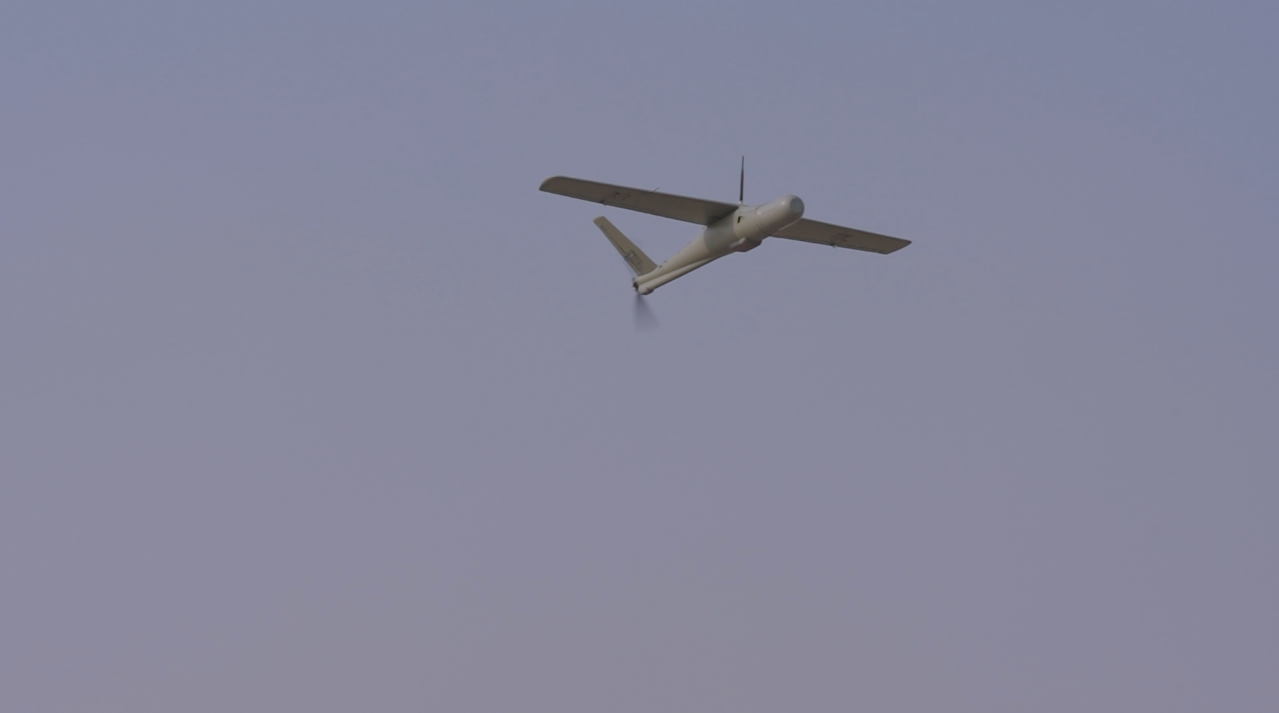
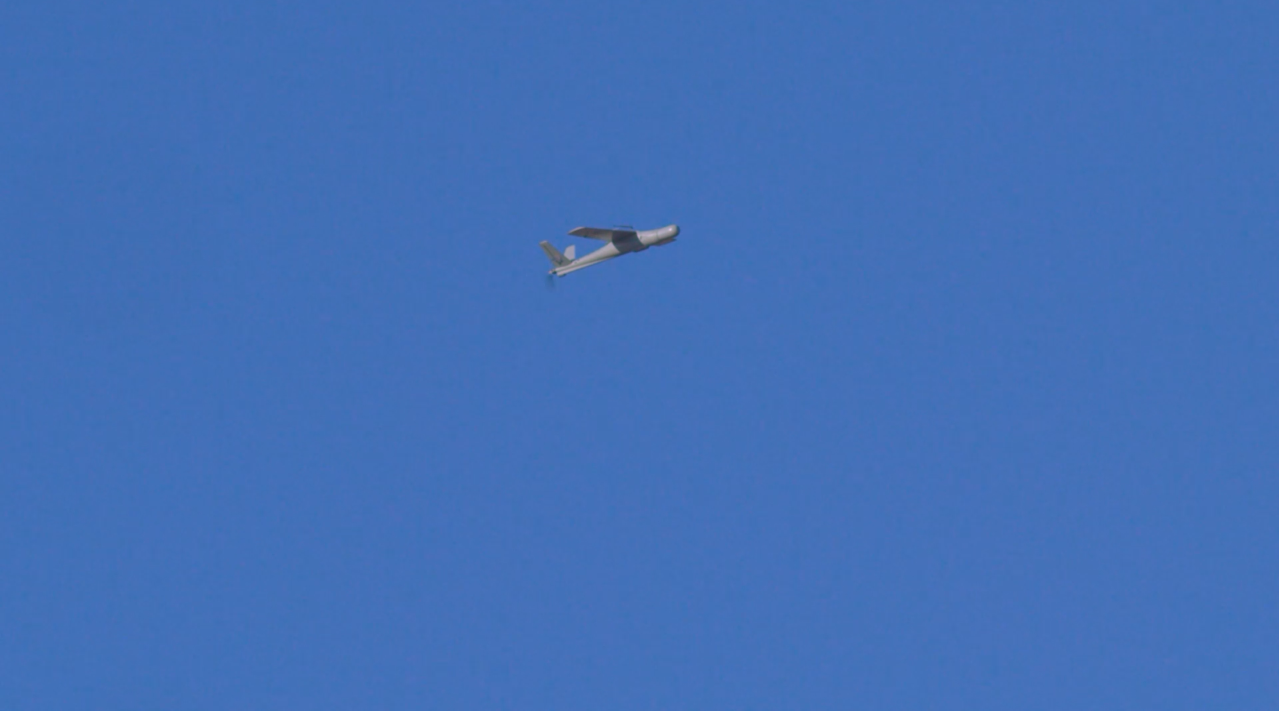
The nose of this drone features a unique quasi-conical and modular design. This design allows for the accommodation of various types of warheads, including penetrating and fragmentation options, since the drone’s nose is where the warhead is located. The Fateh drone is equipped with a 500-gram warhead made up of small fragments, making it effective for targeting unprotected groups of personnel and equipment.


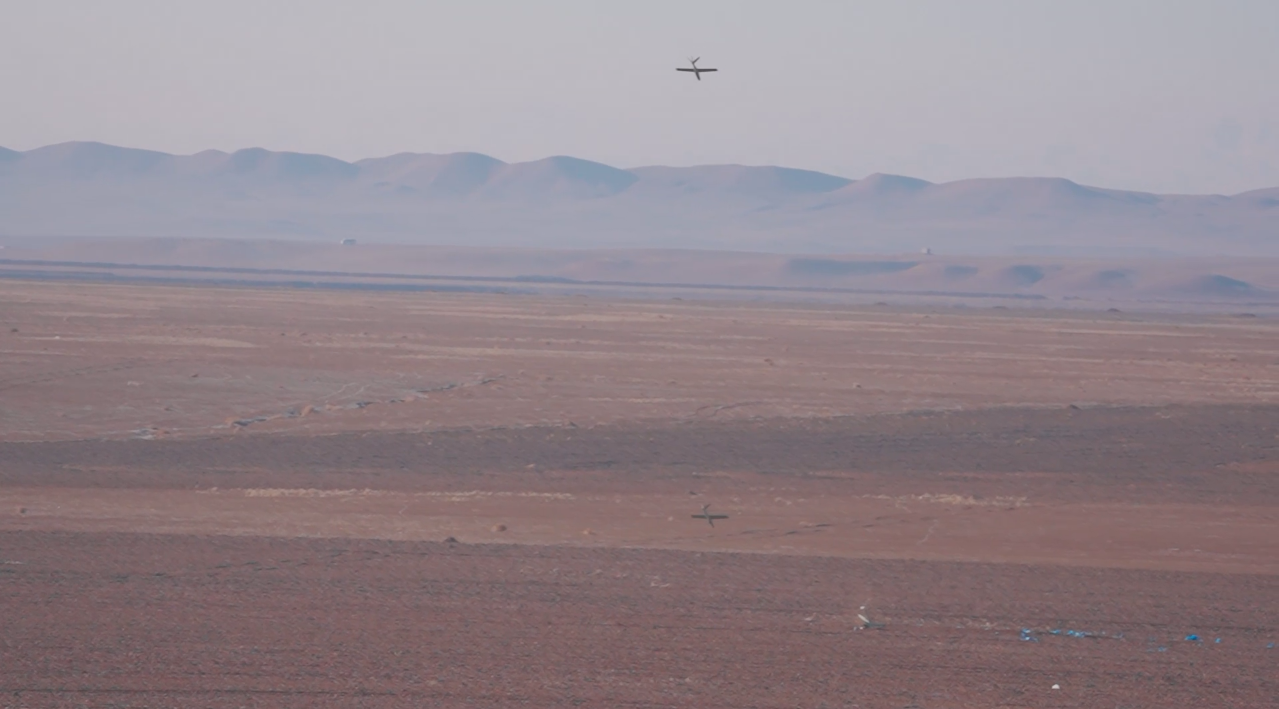
The Zhubin features a unique launch method. It is launched using a small pneumatic launcher with a metal base. The components of this launcher include a control module, a hollow metal rod, a pressure regulation system, and a gas cylinder. There is an empty space at the bottom of the drone’s body, just below the engine. During the launch, the launcher’s hollow metal rod is inserted into this space, and high-pressure gas is released to provide the necessary propulsion force for the drone’s initial acceleration. The gas is supplied by small, reusable capsules.
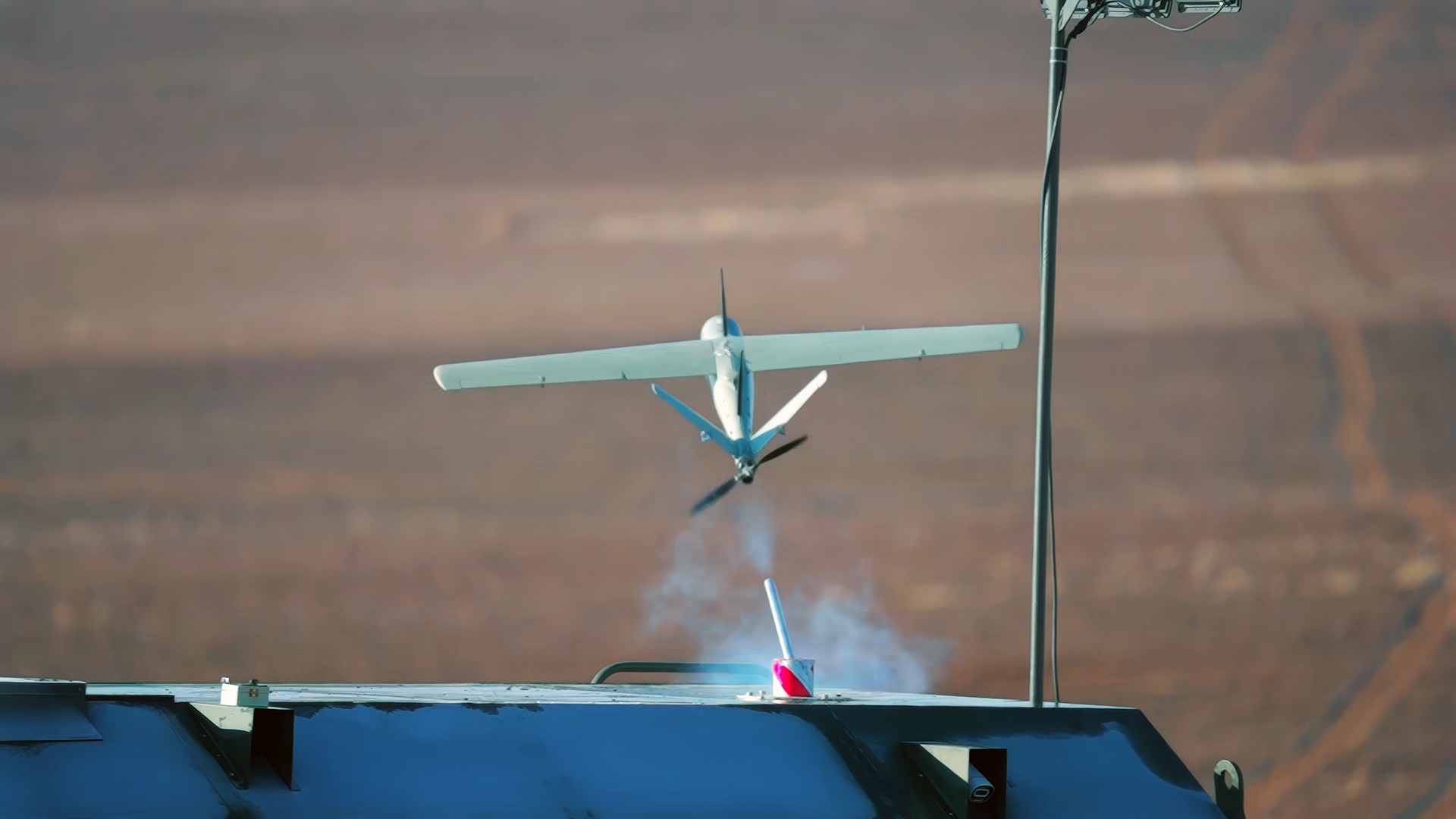

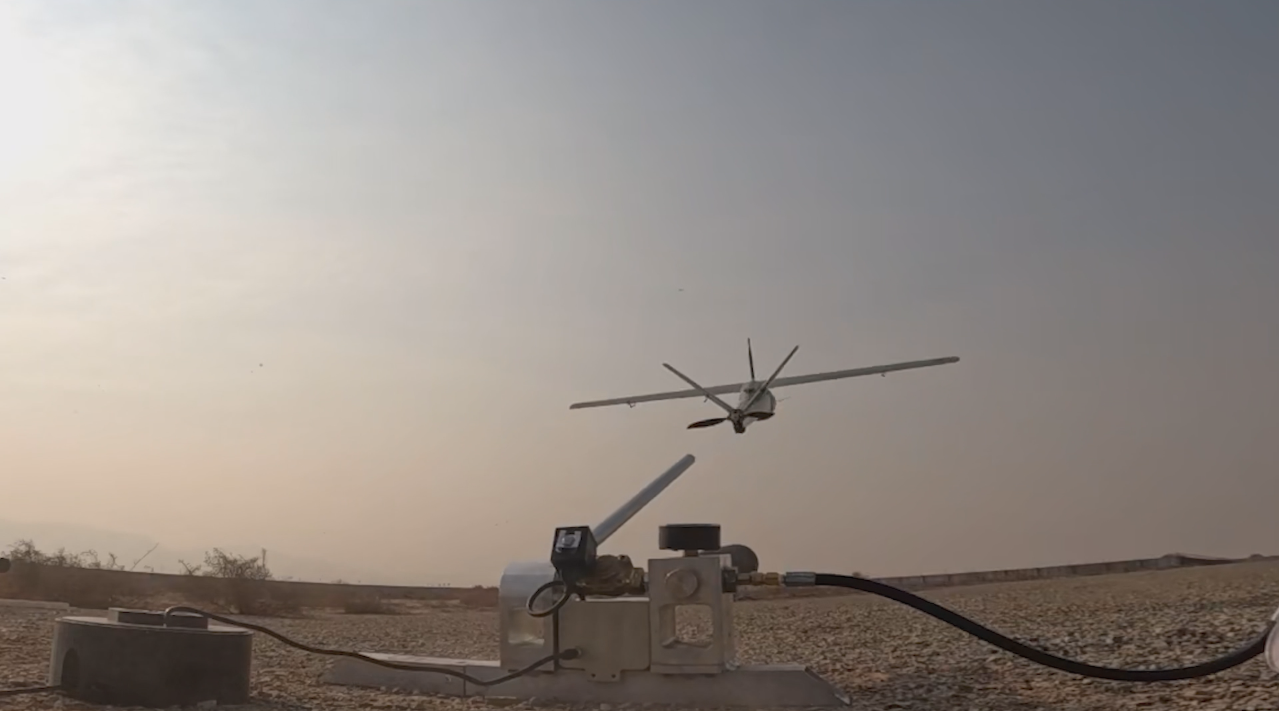
A special variant of the Zhubin drone has been developed with the capability to be fitted with optical seekers, featuring television lenses in its nose. While specific information about this version’s performance is limited, some visible features include two linear radio antennas and a rotating satellite receiver mounted on top of the fuselage.
The drone operates using an inertial-satellite guidance system, which may result in target destruction accuracy of up to a few meters. In contrast, the television guidance version offers much greater precision by transmitting images directly to the operator. The stated operational range of this drone is approximately 20 kilometers. However, this range is primarily constrained by radio frequency limitations. With an enhanced guidance system, it could potentially achieve a range of over 30 kilometers.
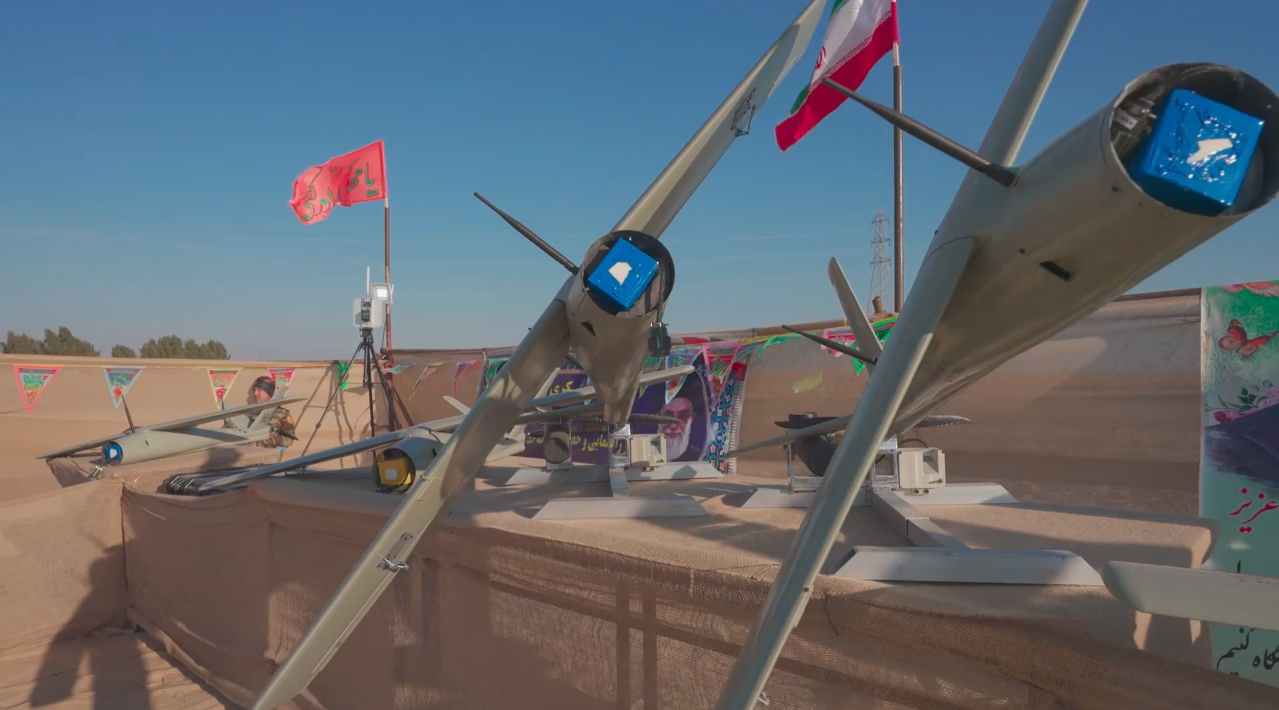
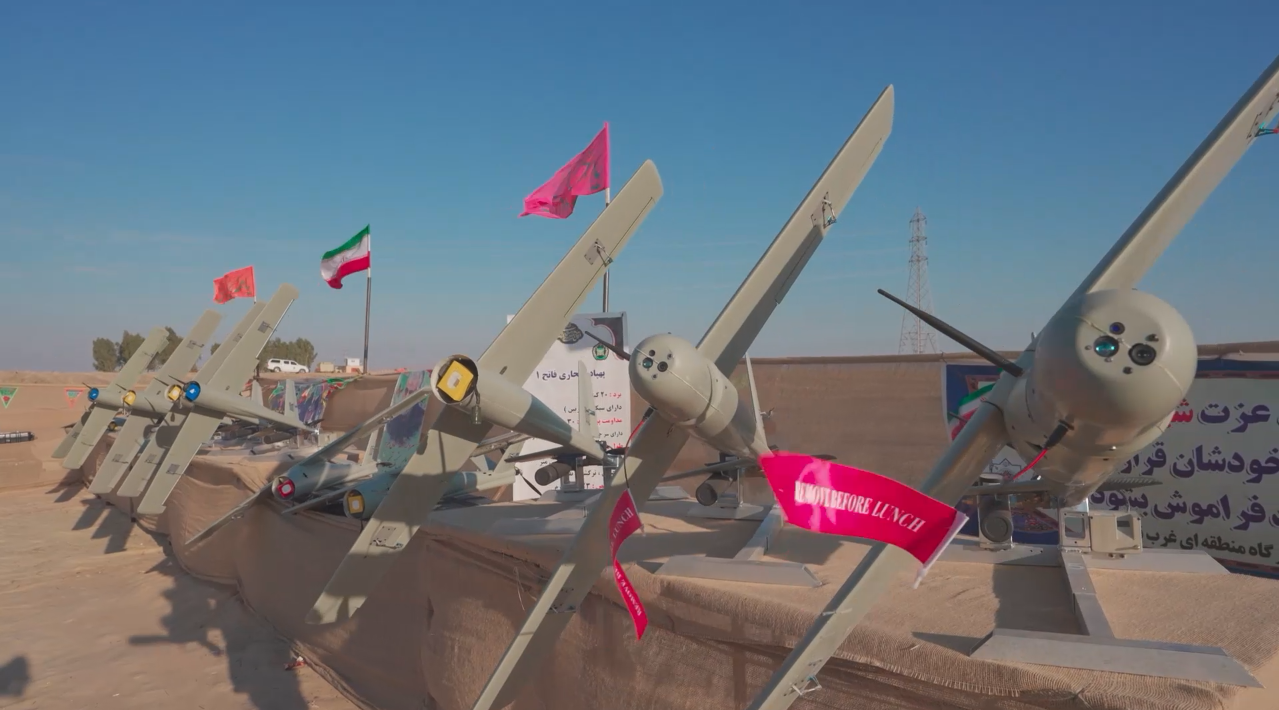
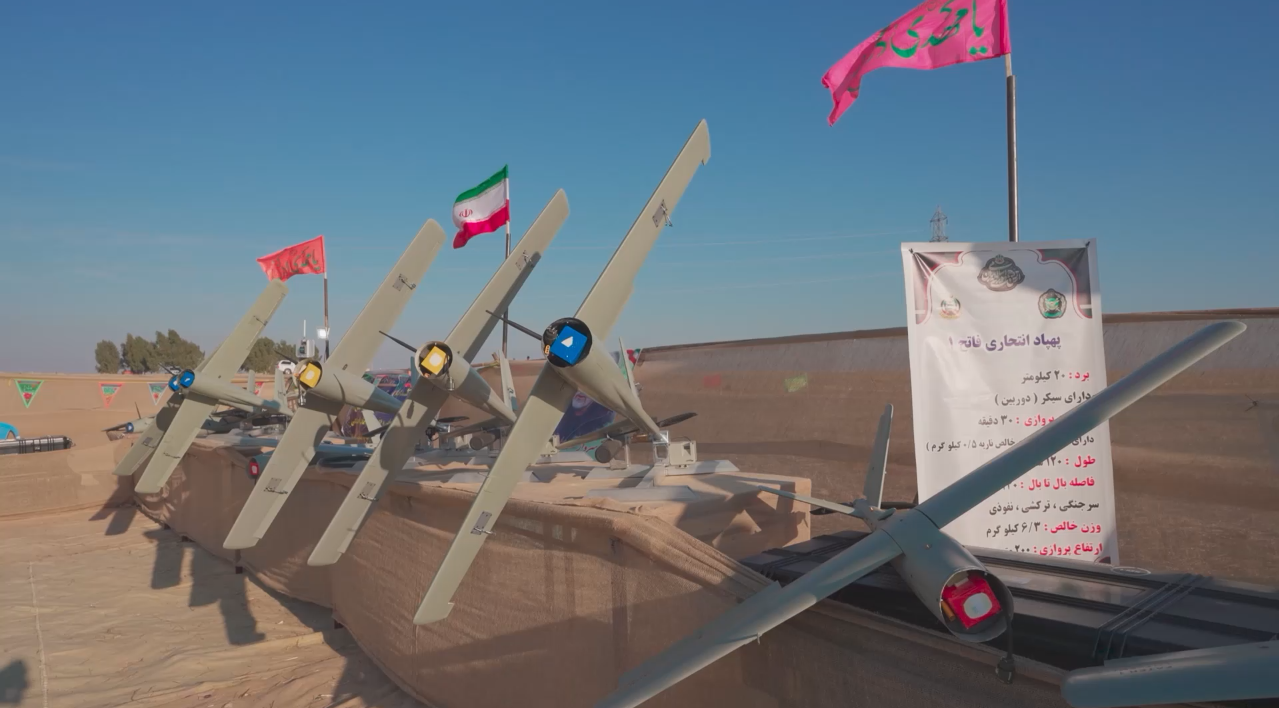
One of the relatively interesting things about the Zhoubin drone was the flight of its prototype from a Fateh-class submarine of the Iranian Navy.
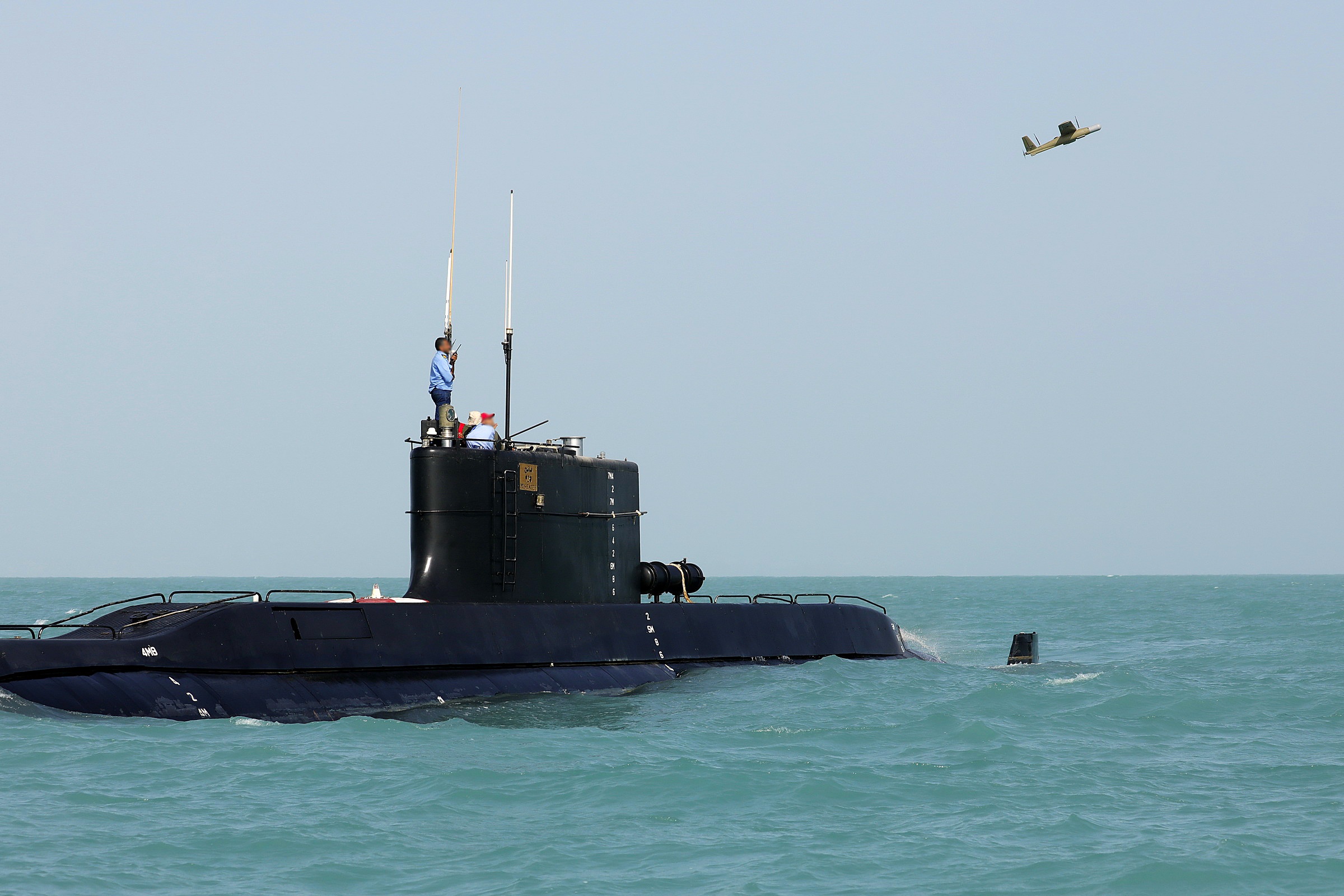
The Zhubin drone shares many similarities with the Warmate drone. In fact, the Zhubin can be regarded as a successful variant of the Polish Warmate, which has had a notable impact in Ukraine. The Warmate is a type of suicide drone featuring an electric motor and a modular warhead. It is designed and manufactured by WB Electronics, a subsidiary of the WB Group.
The drone entered the initial production phase in 2016 and was officially adopted by the Polish Armed Forces in the fall of 2017. The primary purpose of the Warmate is to serve as a lightweight, precise, and flexible weapon for close-quarters operations, emphasizing the identification and targeting of various objectives on the battlefield.
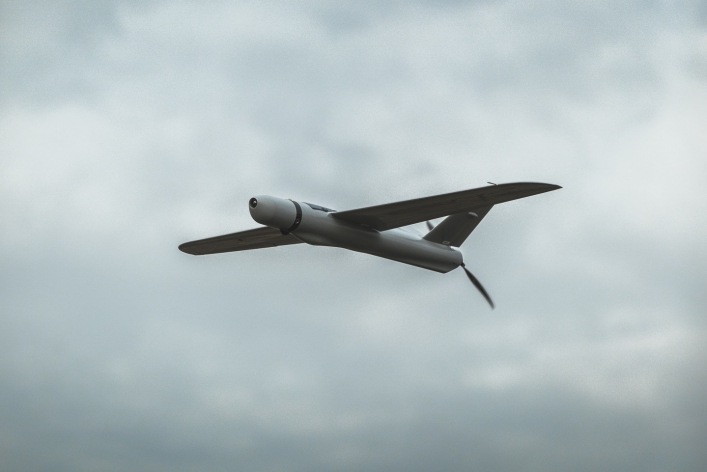

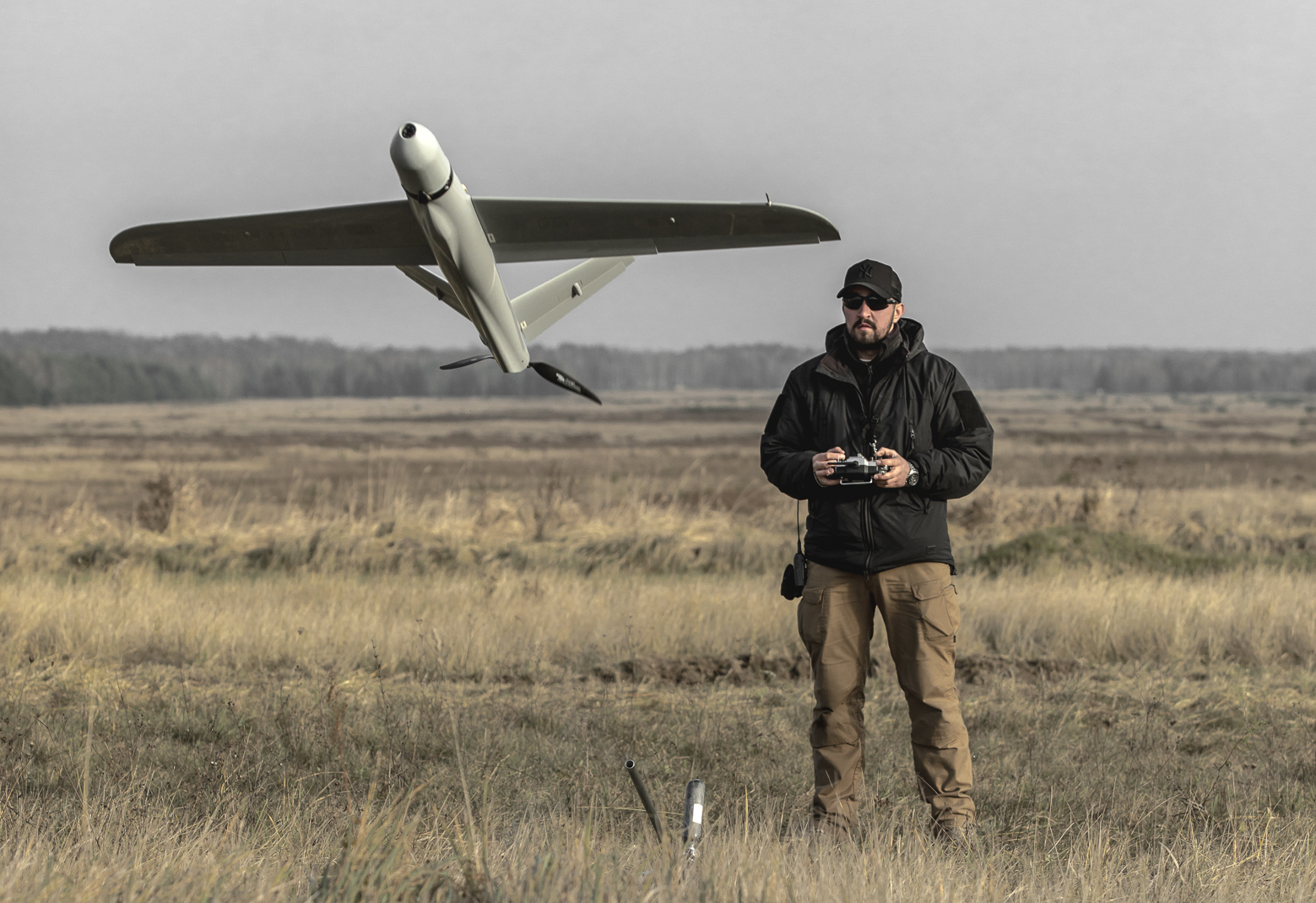
The Warmate drone has been in development since 2010, with the initial version unveiled in 2014. In 2017, the Polish army placed an order for 10,000 units valued at $20 million. The first batch was delivered in 2018 and was immediately deployed in the Ukrainian campaign starting in 2022. Other known customers for this drone include the United Arab Emirates, India, and South Korea.
Specifications for the Warmate drone include a flight endurance of one hour, an operational range of 30 kilometers, a length of 1.1 meters, and a wingspan of 1.6 meters.
Overall, the Warmate family serves as a strong model for the continued development of the army’s Zhubin family. The Warmate has various versions, including a launch pod with movable wings that can be kept ready for a long time. This version would be suitable for equipping armored and tactical vehicles.
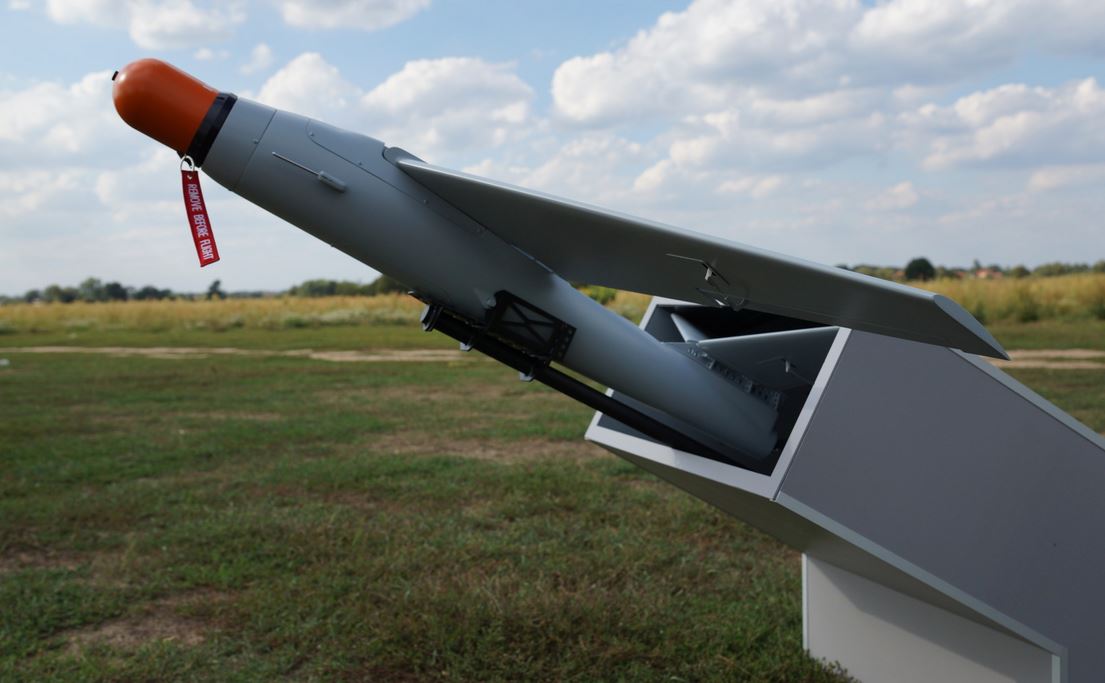
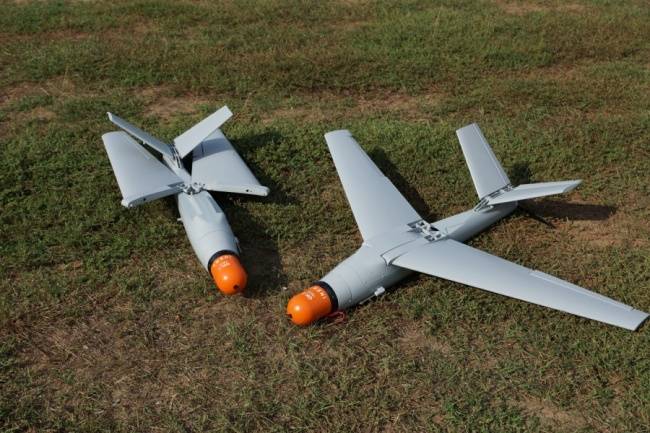
Conclusion:
Suicide drones, such as the Zhoubin, serve a crucial role on modern battlefields as loitering munitions and offer several advantages for tactical operations. With their lightweight and portable design, these drones can easily be transported by ground forces—two people can carry them in a backpack and quickly prepare them for use on the battlefield. Their low mass and straightforward setup allow for rapid deployment in operational conditions, which is essential for responding to sudden threats.
One of the most significant advantages of the Zhubin drone is its ability to hover over target areas. It can remain airborne for an extended period, identify targets, and attack them with high precision. This feature, combined with the capability to fly in groups, makes the Zhubin particularly effective in destroying moving or concealed targets, such as artillery pieces, bunkers, or concentrations of troops. Additionally, the drone can carry a variety of warheads—including fragmentation, thermobaric, armor-piercing, and explosive warheads—providing great flexibility for different mission requirements.
The cameras mounted on the drone’s nose enable live image transmission to the operator, enhancing detection and targeting accuracy. Ground control systems, using encrypted communication, ensure operational security and allow for real-time mission adjustments or target changes. Moreover, these drones have a lower operational cost compared to guided missiles and can operate in groups, increasing their effectiveness for detection and attacks on the battlefield. Ultimately, these drones are a powerful tool for military forces in both tactical and combat operations, combining accuracy, versatility, and affordability.
Specifications of the Zhubin UAV (Fateh UAV):
Origin: Iran
Unveiled: 2022
Length: 120 cm
Wingspan: 140 cm
Engine: Electric
Range: 20 km
Flight altitude: 200 m
Flight duration: 30 minutes
Weight: 6.3 kg
Warhead weight: 500 g
Warhead type: Modular

A collection of Zhubin posters in Farsi, Russian, Arabic and Hebrew:
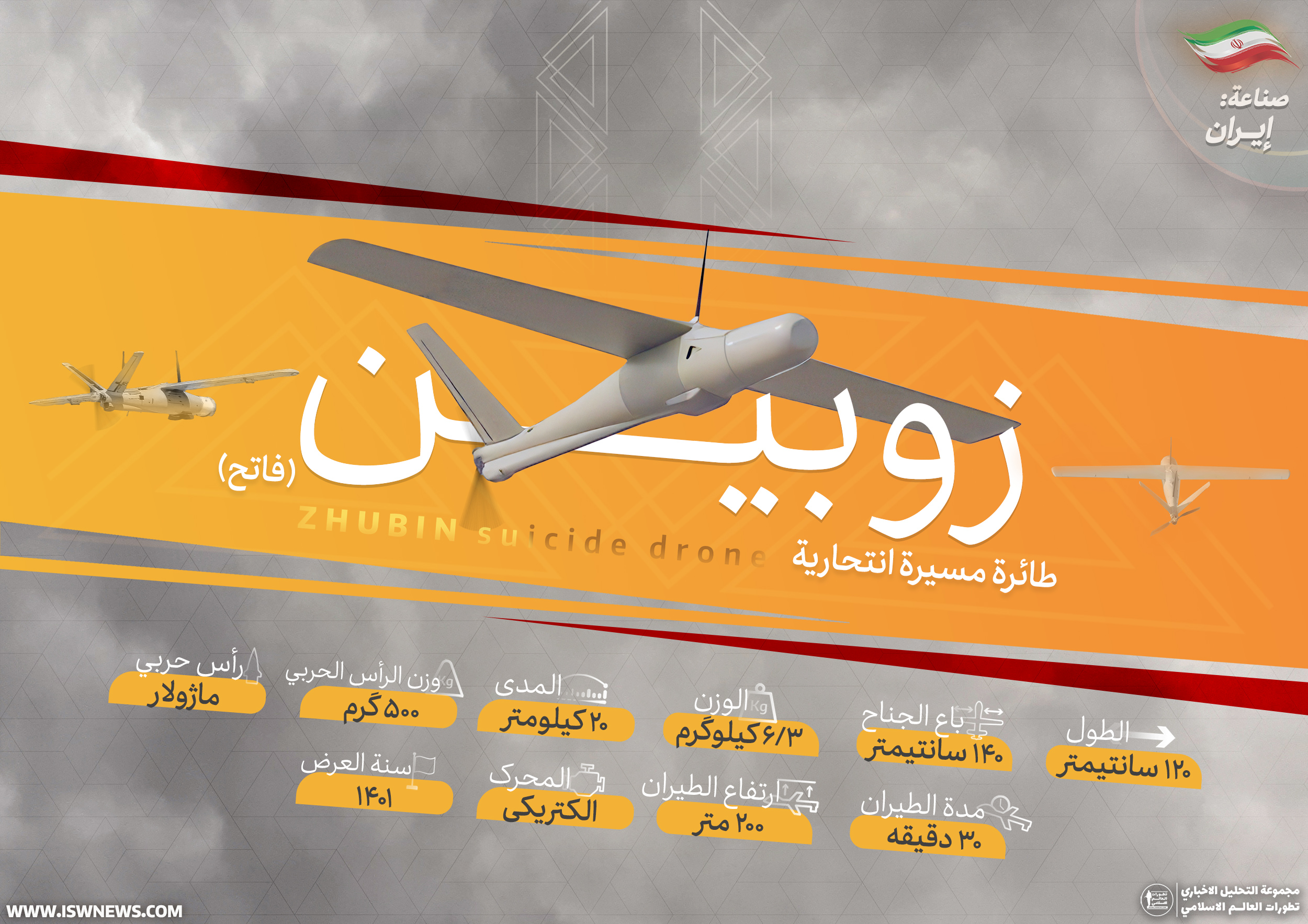
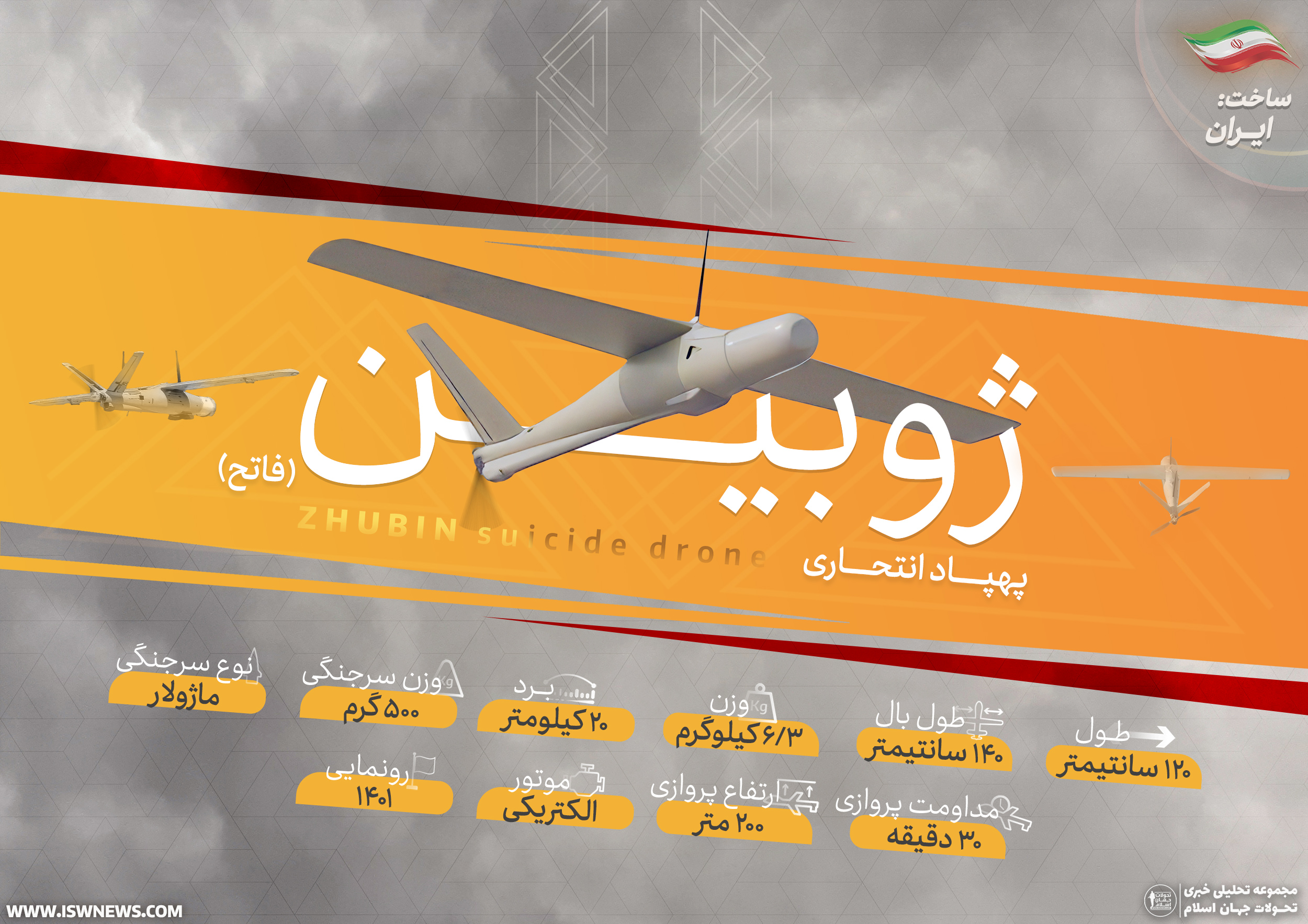
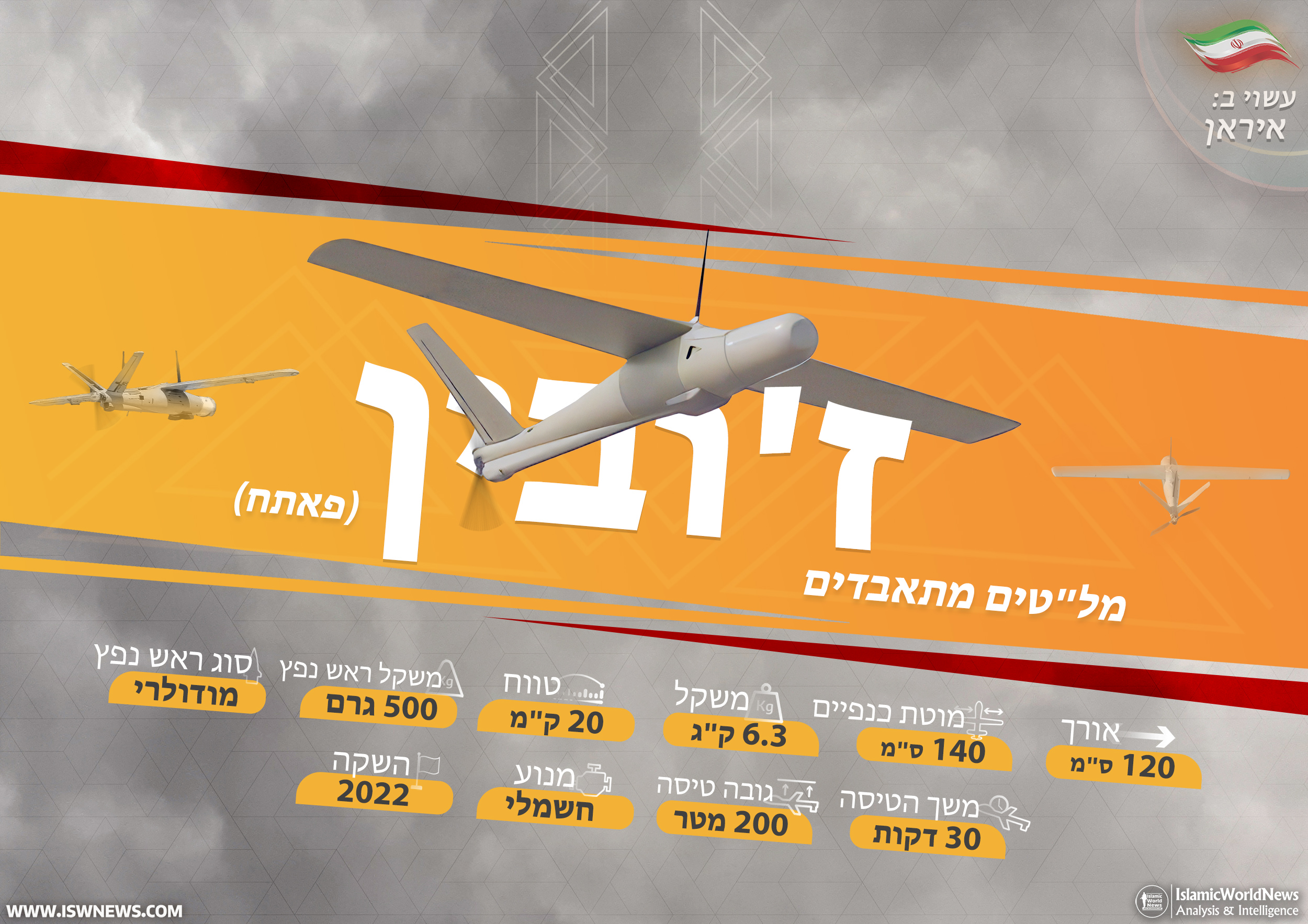


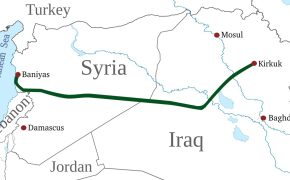


Comment